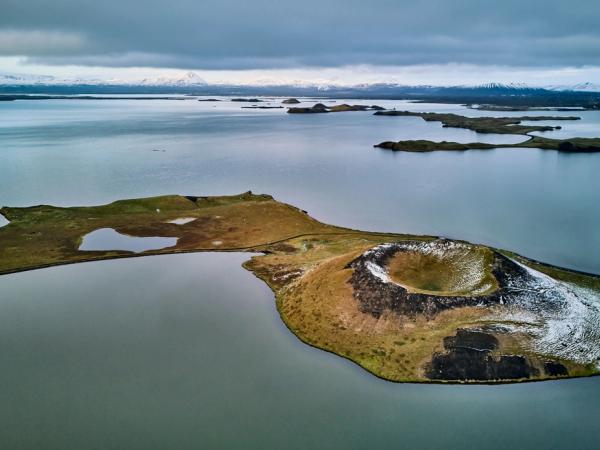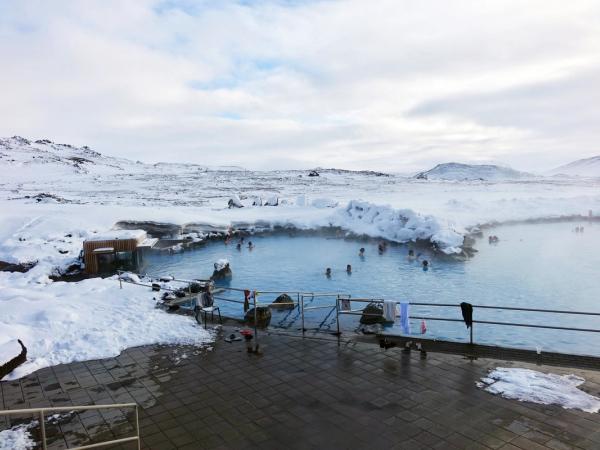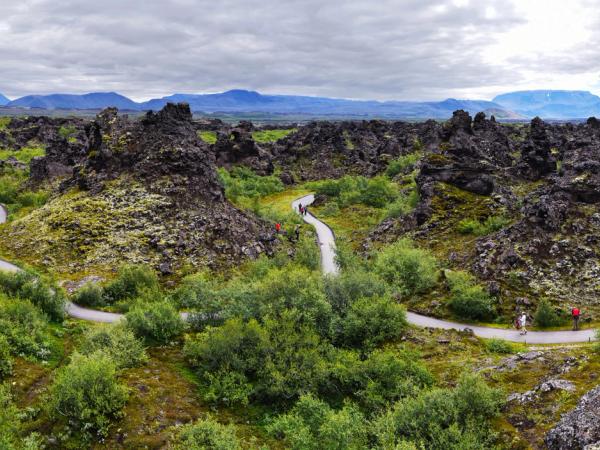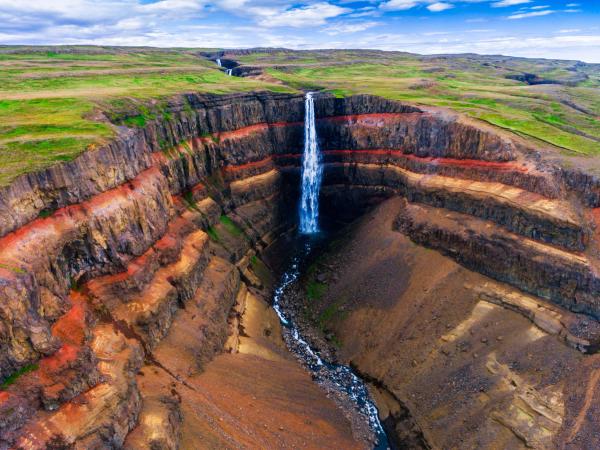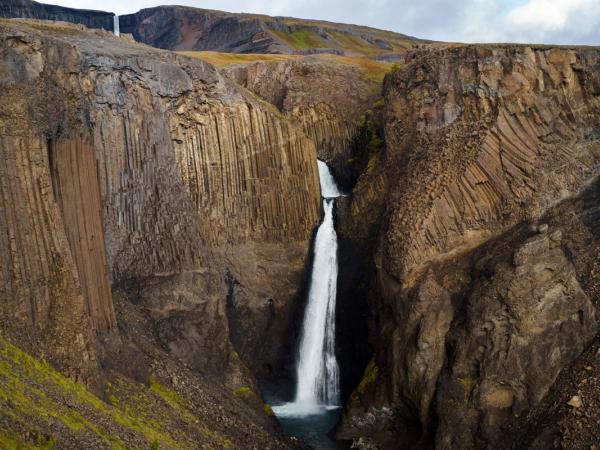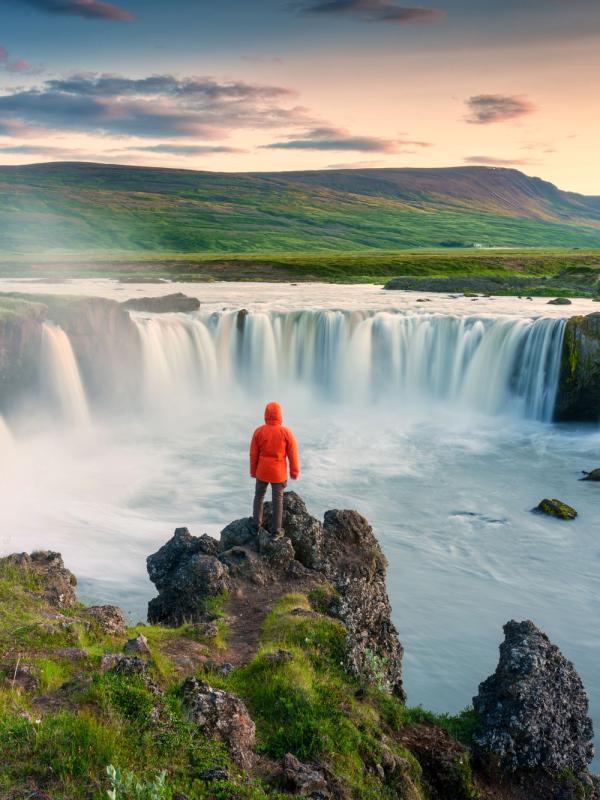
What to see in Iceland: 20 places you shouldn’t miss
Choosing Iceland as a holiday destination is an easy call, but planning the trip can be a bit tricky. It’s a place that, in a relatively small territory, has an endless list of amazing things waiting for you to discover. The next step is fairly simple, too. Getting your flights, choosing places to stay, and renting a good car to travel through the country, as there’s no better way to move around the island than having your own vehicle.
Then, the big decisions come. First, choosing what time of the year you’re coming (if you can choose), as all the seasons have their pros and cons. But what makes it tricky to plan a trip to Iceland is to choose the things you’re going to see. This country has so many amazing things that sometimes it’s difficult to pick just a few. To try to make this job easier for you, we have selected 20 places in Iceland that you shouldn’t miss.
Key Takeaways
- Iceland is known worldwide for its natural monuments, but it also has towns and cities that are well worth a visit.
- Some locations are only accessible in summer, as the harsh winter weather makes it impossible to reach them the rest of the year.
- Some of the wonders we’ve listed here can be grouped in scenic routes like the Golden Circle or the Diamond Circle.
1. Þingvellir National Park
We will start the list with one of the most important places in Iceland at a geographical and geological level. It’s the Þingvellir National Park, one of the three national parks in the country. Historically, this is the place where the Alþingi, Iceland’s parliament, was first established in the year 930 AD. For centuries, representatives from all over the island would gather here to discuss and publish laws.
The Þingvellir National Park is located in the southwest of the country and sits atop the Mid-Atlantic Ridge, which is the boundary between the North American and Eurasian tectonic plates. This means the park and all of Iceland are technically on two continents simultaneously. This can be seen in the Almannagjá Gorge, a drift valley created by the separation of the two plates.
Also underwater in the Silfra Fissure. This is one of the top places in the world for non-salty water scuba diving and snorkeling due to its crystal-clear waters and high visibility. The feeling of swimming touching both plates at the same time is simply unbeatable.
The park was the 3rd most visited spot in the country in 2024, so expect crowds.
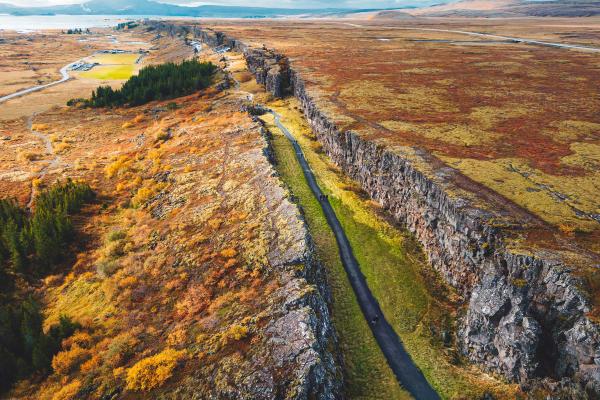
2. Seljalandsfoss
Southern Iceland is a region full of astonishing places. Here we can find, for example, many of the best waterfalls in the country. One of the most iconic is, without a doubt, Seljalandsfoss. It’s an impressive 60-meter (198 feet) drop. But height is not the most impressive feature of this place. What sets this waterfall apart is that there’s a path that goes behind the water curtain, which allows you to have a unique point of view.
Seljalandsfoss is located just off the famous Ring Road, officially Route 1, the country's most important road. The walk from the road to the waterfall takes five minutes. It is about 130 kilometers (80 miles) southeast of Reykjavik.
Not far from it, you'll find Gljúfrabúi, another fantastic waterfall that many tourists miss. It's inside a cave, and you have to walk through some rocks, but it's doable. It’s highly recommended to wear waterproof clothes and shoes to visit these two natural monuments.
3. Skogafoss
We continue in the south of the country to discover another impressive waterfall and one of my favorites: Skogafoss. It’s about the same height as Seljalandsfoss but considerably wider and stronger. The water drops over a pool, creating a dense mist that turns into a rainbow when the sun is out. A trail takes you to the bottom of the fall, where you can feel the roar the water creates.
There’s also a staircase that takes you up to a platform from where you can enjoy spectacular views of the waterfall and the surrounding landscape. The green fields nearby add to this already dramatic backdrop. This is a place imbued in local folklore, too. There’s a story that tells that a Viking settler called Þrasi Þórólfsson hid a treasure chest behind the waterfall.
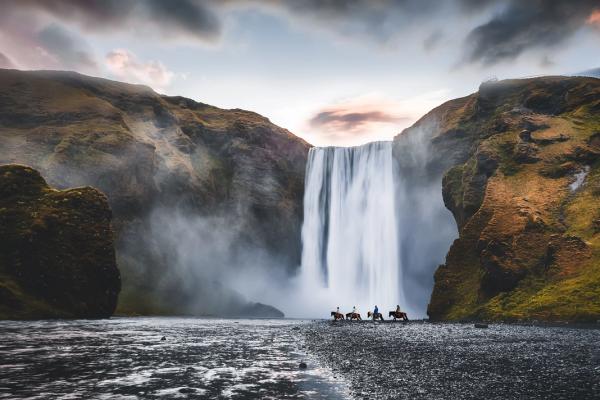
4. Geysir Geothermal Area
Geothermal energy is one of the many natural forces that have shaped Iceland. And there are not many places showcasing it like the Geysir Geothermal Area. This place takes its name from the Great Geysir, a powerful geyser that shoots water up 38 meters into the air (125 feet). However, it’s mostly dormant nowadays.
Luckily, the Strokkur geyser is the star of the show. It erupts every 5 to 10 minutes, sending water up to 20 meters (65 feet) into the air. The area is also full of bubbling mud pools, steam fumaroles, and colorful mineral deposits, a testament to the intense forces that occur beneath the surface of the Earth.
This area was the second most visited spot in Iceland in 2024, with 1,373,617 visitors. It's not a hidden gem, but it's pretty cool to see.

5. Jökulsárlón Glacier Lagoon
Just off Iceland’s south coast, you'll find the Jökulsárlón Glacier Lagoon, a striking place featured in James Bond and Batman movies, among others. This lagoon sits at the edge of the Breiðamerkurjökull glacier, which is part of the larger Vatnajökull. The most surprising thing about this lagoon is that it’s full of big chunks of ice that have separated from the glacier and float on the water for several days, weeks, and even months before drifting out to the sea.
Many of these little icebergs are intense blue. Some of them end up in Diamond Beach, which is quite close. There, they create a striking contrast with the black sand, making it one of the favorite places in Iceland for photographers.
I recommend you take the boat tour to get closer to the icebergs, see seals, and learn more about the lagoon and the surrounding glaciers (or glaciers in general).
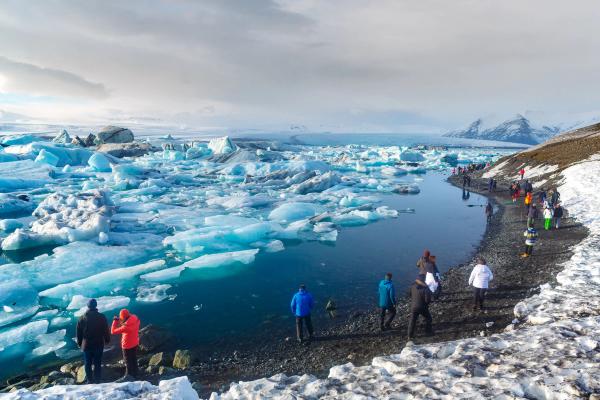
6. Reykjavik
Although nature is usually the main center of attention for all travelers coming to Iceland, there are also a bunch of cities that are quite interesting. And Reykjavik, the country’s capital, has more things to see and do than any other. This city allows you to get in touch with the culture and history of Iceland like no other place. The capital’s most iconic monument is probably Hallgrímskirkja, the biggest church in the country and one of its most characteristic buildings.
Go to the Bay Shore to visit Harpa Concert Hall, the cultural heart of Reykjavik. It’s a modern building made with glass panels that hosts concerts, plays, festivals, and other cultural events. If you’re into history, the National Museum of Iceland and the Saga Museum have very interesting exhibitions about the Viking past and the cultural heritage of the island. The city also has many art galleries and museums, like the Reykjavik Art Museum.
Laugavegur Street is the heart of the town’s commercial and leisure life, but there's much more than just that street. There are plenty of shops, stores, breweries, cool bars, and restaurants where you can connect with the Icelandic way of life and try the local food.
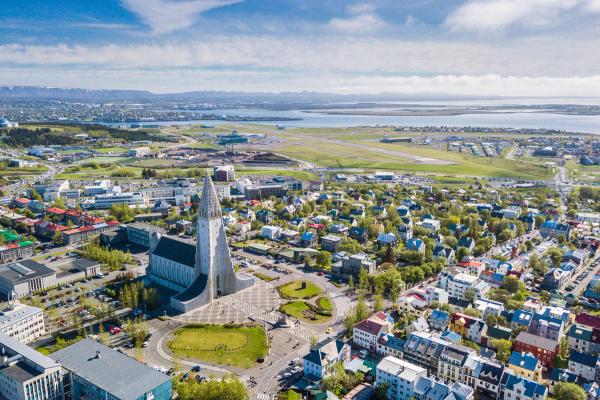
7. The Blue Lagoon
One of the things Iceland is also famous for is its many hot springs and geothermal natural baths. They are great places to wind down and connect with the local culture. And not only that. It’s very common for Icelanders to gather in such places to socialize and even hold business meetings.
The most famous of all the geothermal spas in the country is, without a doubt, the Blue Lagoon. It’s located on the Reykjanes Peninsula, in the country's southwest, fairly close to Reykjavik.
Here, you can soak up in milky blue waters, rich in minerals, in the middle of a lava field that seems to be from another planet. The spa has several hot water pools, steam baths, saunas, and a Michelin-star restaurant. It also offers massages and other health and beauty treatments.
The Blue Lagoon is worth visiting, but it's also extremely busy most of the time. If you're looking for a quieter, more traditional experience, go to places like the Secret Lagoon or some of the free hot springs spread across the country, such as the Reykjadalur Hot Spring or Seljavallalaug.
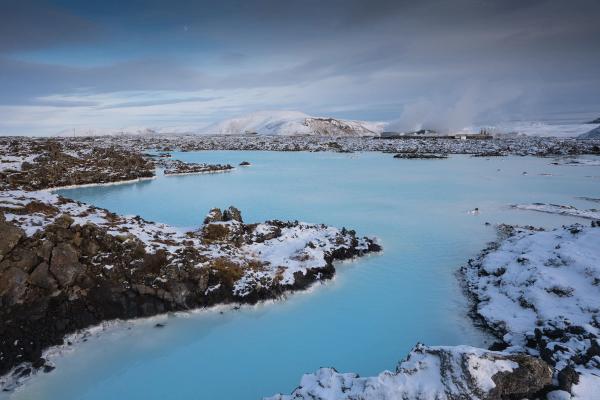
8. Akureyri
Akureyri is Iceland’s second-largest city, also known as “The Capital of North Iceland. "It is an important port and fishing town on the shore of the country's longest fjord, Eyjafjörður.
Although it is not as big as Reykjavik, it offers plenty of things to do and some of the best restaurants in the country.
The Akureyri Church is the most iconic building in the city and has amazing views of the fjord. If you’re into nature, don’t miss out on the Akureyri Botanical Gardens, which hosts an extensive collection of Arctic and cold-climate plants.
The city also boasts a rich and active cultural life, with several art galleries, theaters, and festivals that are held all year round. It’s also a fantastic spot to discover the Icelandic cuisine, especially its fresh seafood and recipes like the plokkfiskur, which is a fish stew.
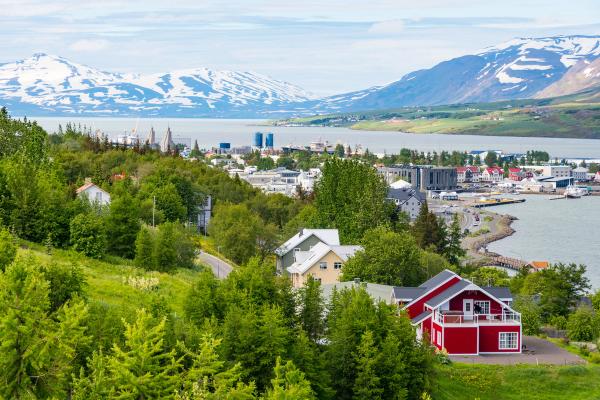
9. Snæfellsjökull National Park
We travel now to West Iceland to discover another of the country’s national parks. The Snæfellsjökull National Park is the only one of the three with land and marine areas. It’s located on the Snæfellsnes Peninsula, an area nicknamed “Iceland in miniature” for its variety of landscapes and natural wonders.
The star of this region is the Snæfellsjökull glacier, a huge ice cap that sits atop a volcano. The mountain is where Jules Verne located the entrance to the unknown in Journey to the center of the Earth.
The variety and diversity of landscapes in this region are almost endless. I highly recommend visiting the Lóndrangar cliffs, two huge basalt columns rising from the sea. Also, there’s a lovely coastal path between Arnarstapi and Hellnar, two charming fishing towns on cliffs. Other great places to visit are the Vatnshellir Cave, the Rauðfeldsgjá Gorge, or the Ytri-Tunga Beach.
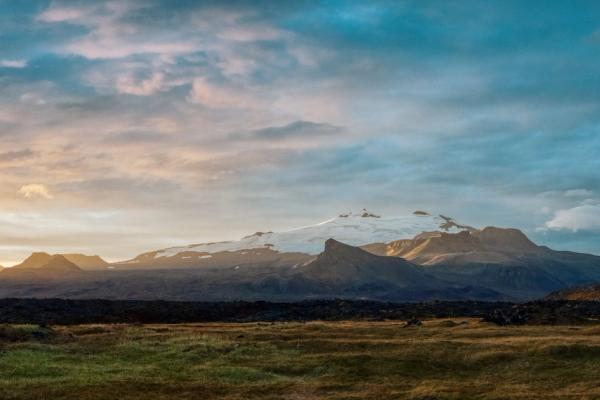
10. Gullfoss
This beautiful waterfall is the third main stop of the famous Golden Circle, a scenic route that connects some of the best things to see in southwest Iceland, along with Þingvellir and the Geyser area. Gullfoss means “golden falls” in Icelandic, and it’s due to the colorful effect that the sun creates on the mist generated by the waterfall.
The waterfall comprises two consecutive cascades over the Hvítá River, with a total drop of 32 meters (105 feet) over a deep canyon. One of the best things about Gullfoss is its several viewing platforms. One at the top offers panoramic views of the waterfall and the surrounding landscape, while the one at the bottom allows visitors to get a closer look.
Gullfoss is beautiful and very close to Reykjavik, so it's 100% a must-stop. However, it's not one of my favorite waterfalls in the country. Surprisingly (for me, at least), it was the most visited spot in Iceland in 2024, with over 1.5 million visitors.
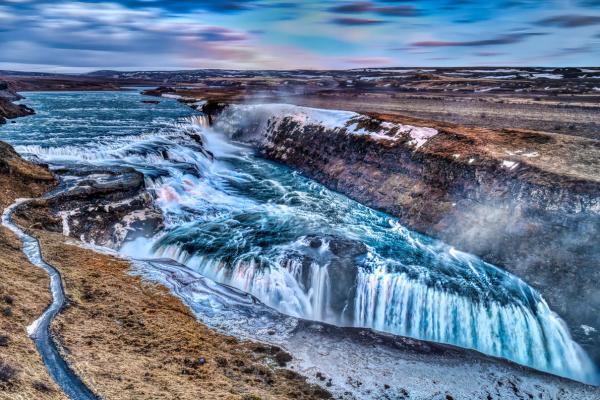
11. Lake Mývatn
Our next stop is located in North Iceland and is one of the five main stops of the Diamond Circle. Mývatn is a lake of volcanic origin surrounded by a diverse landscape. It’s an area of intense geothermal activity, with many steam fumaroles and volcanic craters. The lake was formed around 2,300 years ago as a result of a huge eruption.
In this area, you can also visit the Mývatn Nature Baths. The color of these geothermal baths is very similar to the Blue Lagoon's, but it's much quieter. Here, you can enjoy a hot bath in the middle of a surreal landscape.
Mývatn is also home to Dimmuborgir, a labyrinth of lava formations, caves, and tunnels. Its name means “dark castles,” as it’s what they look like from a distance.
12. Kirkjufell
This mountain is actually inside the Snæfellsjökull National Park, but it deserves a separate mention. Its name means “mountain church,” and its iconic shape has made it one of the most photographed natural monuments in Iceland. It’s 463 meters high (1520 feet), which is not a lot, but its shape, which resembles the spire of a church or a witch’s hat, makes it really special.
The nearby Kirkjufellsfoss waterfall and the mountain create a fantastic combination. Together, they create an image that looks straight out of a postcard. It’s especially charming in winter when part of the waterfall freezes.
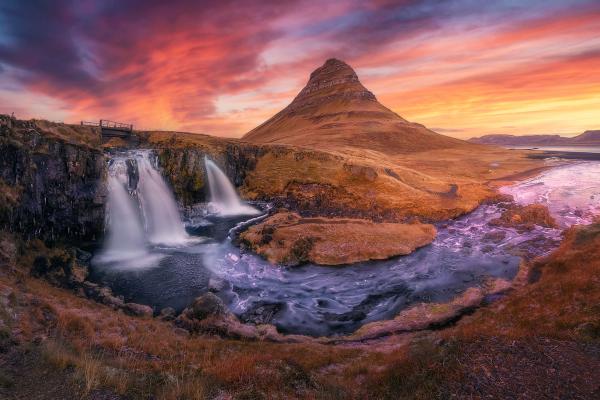
13. Goðafoss
Goðafoss waterfall is another of the main stops of the Diamond Circle. Its name means “waterfall of the gods,” and it’s one of the most iconic waterfalls in Iceland. It is 12 meters (40 feet) high and 30 meters (98 feet) wide. What makes this place impressive is not its size but the striking turquoise color of the water.
A cool extra is that it can be accessed from both sides of the river. The west side, close to the parking area, gives a panoramic view of the area. The eastern side allows you to go to the waterfall's base and get a more intimate look. Funny enough, the eastern side (yes, the eastern side alone) of Goðafoss was the 6th most popular spot last year, with 288,430 visitors.
This waterfall also holds an important place in the history of the country. Here, in the year 1000, local chieftain Þorgeir Ljósvetningagoði threw his pagan idols into the water when the nation converted to Christianity. Hence the name of this place.
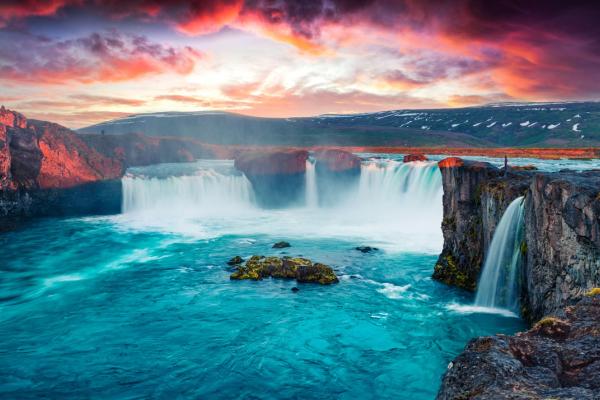
14. Vatnajökull National Park
The third of the national parks in Iceland is Vatnajökull, the largest national park in Europe. In fact, it covers 14% of the country’s landmass. It gets its name from the huge glacier, also the largest in the continent, that crowns the park. It’s the perfect place to learn about Iceland's glaciers, especially if you join one of the many guided tours available there. The expert guides offer fascinating information about glaciers' formation, history, and the importance of preserving these ice giants.
Another great option is to visit one of the many ice caves in the park. In the warmer months, the glacier’s meltwater sculpts these underground wonders. In winter, the water freezes again, creating new formations every year. The colors and textures inside the ice walls are mesmerizing.
I also recommend you visit the Skaftafell Nature Reserve. It used to be a national park but was later integrated into the larger Vatnajökull. The area has a surprising variety of landscapes, and a huge network of hiking trails covers most of it.
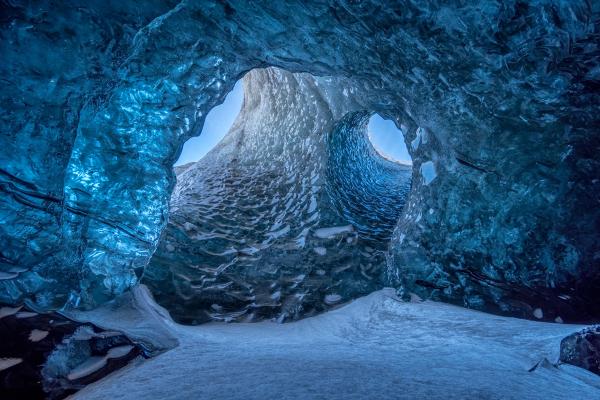
15. Hornstrandir Nature Reserve
If you’re looking for a truly immersive experience in the Icelandic wilderness, go to Hornstrandir Nature Reserve. It’s a place of extreme beauty, but it’s quite remote, in the northernmost point of the Westfjords. There are no roads here, nor houses. Just untouched nature. In fact, the only way to get there is by boat from the town of Ísafjörður and in the summer months, as the weather is too harsh the rest of the year.
Several hiking trails in the reserve take you through cliffs, prairies, and areas barely touched by mankind. It’s also home to the Arctic fox, the only mammal native to Iceland and one of the animals tourists want to see the most when they come here. There are several camping areas to spend the night, but you must bring everything you need, like sleeping gear and food, as it’s necessary to be completely self-sufficient.
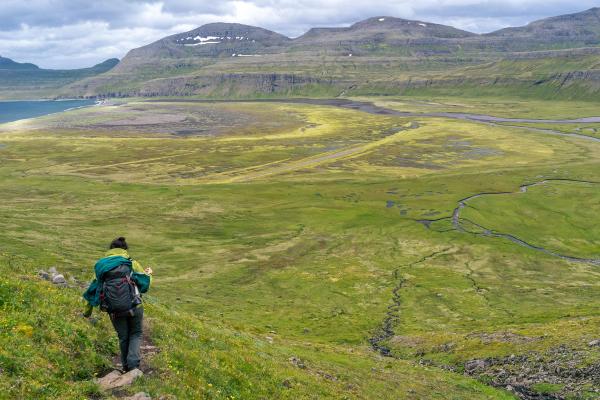
16. Ásbyrgi Canyon
This impressive geological feature is a wonderful location, but also a place where Norse mythology can be felt. This horseshoe-shaped canyon is about 3.5 kilometers long (2.2 miles) and one kilometer wide (0.6 miles), with a dense forest at the bottom and towering rock walls. Legend says that it was formed when Sleipnir, Odin’s eight-legged horse, struck the land here with its hoof, hence its shape. In reality, it’s believed that it was formed by a devastating glacial flood that occurred more than 10,000 years ago.
The canyon is divided into two parts. The lower part has a beautiful birch and willow forest and a small pond. The area is home to several bird species. The other half is made up of cliffs over 100 meters (330 feet) in height that rise over the forest. There are several trails in the area, with different lengths and difficulty levels, to explore the canyon. It’s one of the stops of the Diamond Circle.
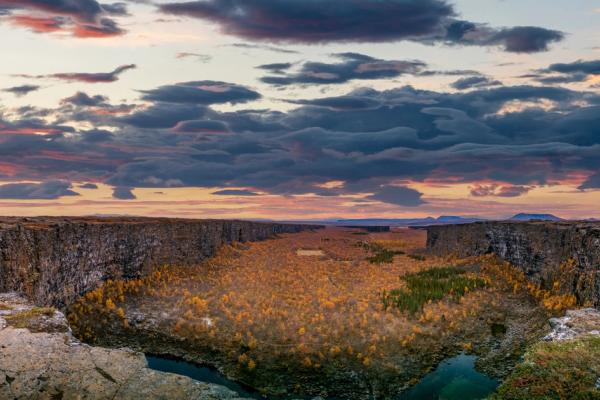
17. Dettifoss
Not too far from Ásbyrgi is Dettifoss, the second most powerful waterfall in Europe. It has a drop of 44 meters (144 feet) and is 100 meters (330 feet) wide. But what makes Dettifoss so impressive is the sheer volume of water that creates a strong roar that can be heard from quite a distance. In fact, it has been nicknamed “The Beast.” Standing in front of it is a humbling experience and a reminder of the powerful forces that shape our planet. Dettifoss is a tourist favorite. It was the 7th most visited spot last year.
It’s, by itself, one of the most impressive natural monuments in the whole country. However, the visit can be even better if you add stops to two other waterfalls nearby. One is Selfoss, a quiet semicircular waterfall. The other is called Hafragilsfoss, a fall over a beautiful canyon.
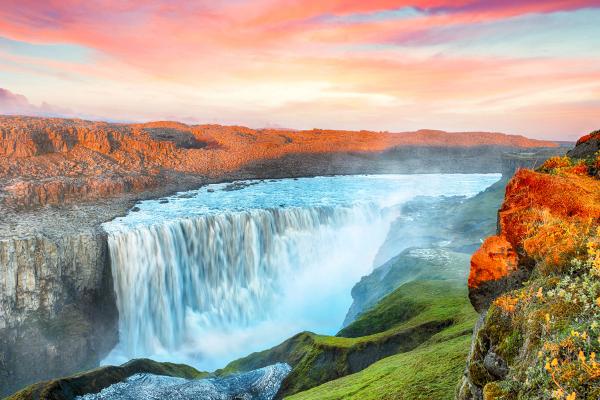
18. Dynjandi
The Westfjords are one of Iceland’s eight regions. They are located on the peninsula at the northwest corner of the country and are among its most remote and isolated regions. Many tourists skip this region, missing many of the natural monuments there. One of the most impressive is Dynjandi, a series of cascades totaling 100 meters (330 feet) in height. It’s one of the tallest waterfalls in Iceland.
From a distance, it resembles a bride’s veil. Several paths lead to the area, which is great for taking pictures or having a picnic.
This is another one of my favorites. It's pretty impressive.
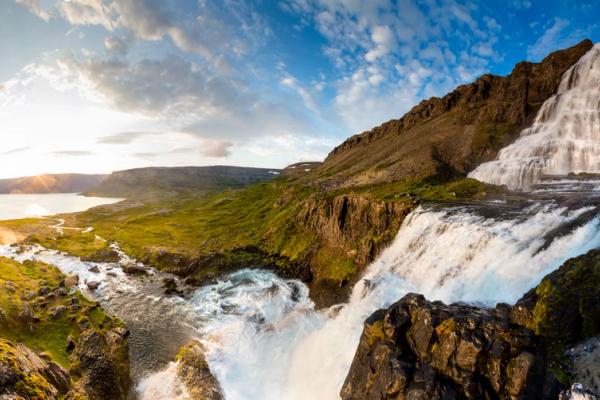
19. Landmannalaugar
In the Highlands, one of Iceland's wildest areas, we can find the striking landscape of Landmannalaugar. This geothermal area is known for its colorful rhyolite mountains, geothermal hot springs, and large trail network, which allows visitors to explore the area.
A great way to end a day of adventures is to bathe in the Landmannalaugar hot springs. However, it’s important to remember that the roads leading to the Highlands (the infamous F roads) are only open in summer, as the weather forces the authorities to close them the rest of the year.
This place is also the starting point of the Laugavegur trail, the most famous hiking route in the country. It’s a several-day hike that connects Landmannalaugar with Þórsmörk, a green valley further south. It’s 55 kilometers (34 miles) long and usually takes between 4 and 5 days to complete. There are several campsites and mountain huts along the way where you can spend the night.
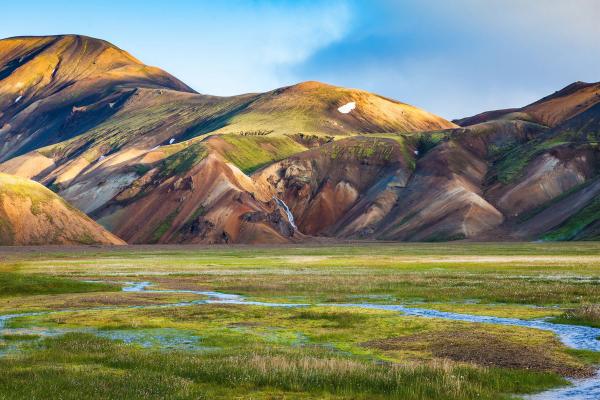
20. Hengifoss and Lítlanesfoss
Lastly, we’re going to East Iceland to discover two amazing waterfalls. They are very close to each other, and a path connects them both. The most impressive of the two is Hengifoss, one of the tallest waterfalls in Iceland, with a drop of 128 meters (420 feet). The water contrasts beautifully with the black and red rocks in the back.
On your way to Hengifoss, you’ll pass by Lítlanesfoss, which is also spectacular. It’s not as big as the first, but it’s worth it to stop and see it. What makes this place special is the huge basalt columns around it. It’s actually lava that cooled down thousands of years ago.
Conclusion
Iceland has a lot to offer. It’s like an open-air museum, with nice cities and towns offering a unique lifestyle and fascinating culture. There’s so much to see that it can be tricky to choose just a few, especially if you have limited time on your trip. But whatever you choose, we’re sure it Will be an unforgettable adventure.



